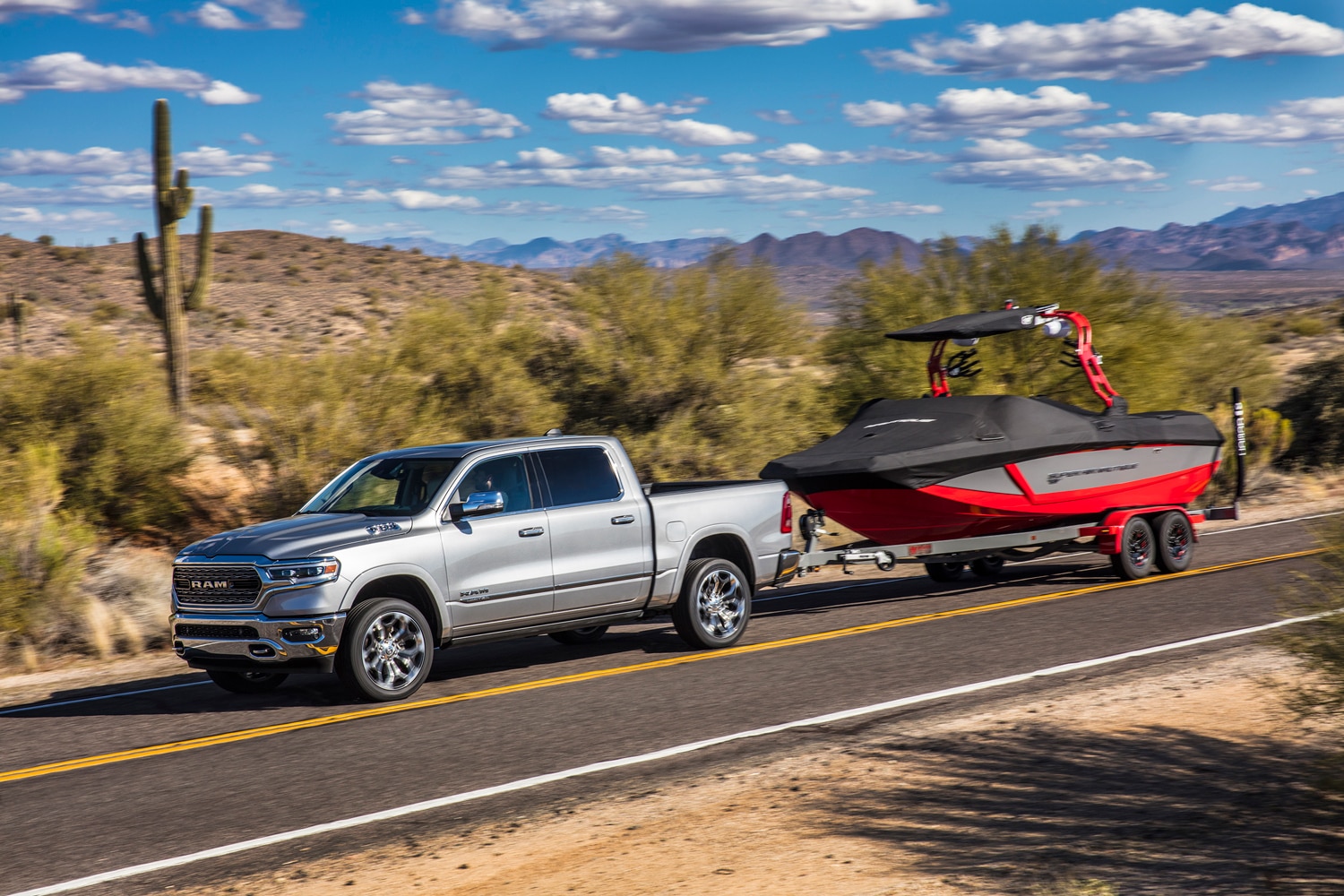How Much Can My Truck Tow?
Towing safely means more than just knowing your vehicle's tow rating.
 Ram
Ram
Have you ever wondered how much you can safely tow with your car, truck, or SUV? While the towing capacity found in the owner's manual indicates a maximum weight, there's more to consider than just that particular figure.
You also need to understand how the equipment you're using to tow can affect your overall towing limit. Hauling a safe load means being aware of the weight of your vehicle, your trailer, and any cargo you are carrying. Fortunately, it's not difficult to take all of this into account and ensure you don’t run into any unexpected situations on your journey.
Gross Combined Weight – Vehicle Weight – Payload Weight = Towing Capacity
All cars, SUVs, and trucks have a gross vehicle weight rating (GVWR) that refers to the maximum weight—including passengers, cargo, and the vehicle itself—that it was designed to transport. For example, a pickup with a GVWR of 8,000 pounds weighing 5,000 pounds can carry a Payload (the total weight of any cargo and passengers) of up to 3,000 pounds.
A similar equation works to determine a vehicle’s tow rating. The maximum weight of a vehicle, its trailer, and any payload added together is known as the gross combined weight rating (GCWR). Subtract the weight of the automobile and the trailer from this number, and you're left with the maximum weight of passengers that can ride along inside and the amount of cargo that can be towed.
There's a subtle distinction to be made here: although a vehicle’s tow rating is a static figure, the more people, pets, and luggage you load into your vehicle, the lower the safe tow capacity becomes.
A vehicle with a GCWR of 9,000 pounds that weighs 5,000 pounds is capable of towing no more than 4,000 pounds. However, add two passengers at a combined weight of 300 pounds, and the tow rating drops to 3,700 pounds. Throw in four passengers at a combined weight of 600 pounds, and you're now down to 3,400 pounds of towing capacity, a drop of 15 percent.
Check The Manual, Then Perform a Reality Check
The owner's manual is where to find your vehicle's GCWR, usually listed adjacent to its curb weight and towing capacity numbers. You might see more than one tow rating here, as the type of hitch you're using and whether a trailer is equipped with a braking system can affect how much your truck can tow.
If you're transporting passengers in addition to your trailer load, it's not that difficult to estimate whether you're within the GCWR limit with some simple math using the equations from above. If you're hauling something like a camping trailer loaded with supplies, or you've filled your truck bed with spare parts and tools for a trip to the racetrack, things can get a little fuzzier.
Here’s an example: 2022 Ram 1500
We’ll walk you through the steps on a fictitious vehicle: a shiny new quad-cab 2022 Ram 1500 with the available turbodiesel V6. Ram provides a handy calculator on
On their website Ram lists the GVWR as 7,100 lbs and the vehicle weight as 5,285.28 lbs. We then found the listed GCWR of 15,600 lbs. The truckmaker factors in the weight of the most popular options, 300 pounds for passengers, and the weight of the hitch receiver. This is in accordance with SAE J2807, a standard that helps make the towing capacity figure consistent across different automakers. Depending on payload (number and weight of passengers, extra gear in the camper, tools in the truck, etc) we start with 10,315 lbs and work downward. Ram lists a max towing capacity of 9,700 lbs for this particular truck.
A quick solution is to visit the closest truck stop, which often has scales available for you to weigh both your vehicle and your trailer, either individually or together. If you’re wondering, ‘How much can my truck tow?’ and think you might be near your vehicle’s maximum towing limit, don't guess—when it comes to towing safely, it's worth making an effort and putting a firm number on what you're carrying.
Written by humans.
Edited by humans.
 Benjamin Hunting
Benjamin HuntingNearly two decades into his career as an automotive journalist, Benjamin has had his hands greasy, his hair blown back, and his heart broken by more than one project car. In addition to his work at Capital One, he has contributed features and reviews to Motor Trend, Car and Driver, Hagerty, Driving Line, Inside Hook, Super Street, European Car, Roadkill Magazine, Motor 1, The Drive, the Toronto Star, the National Post, Business Insider, NAPA, Autoblog, Automotive News Canada, and AutoGuide. He is also cohost of the Unnamed Automotive Podcast and cocreator of the Code 45 and Dead Air graphic novels. In his spare time, he's a friend to vinyl and enjoys keeping the shiny side up during track days.
Related articles
View more related articles